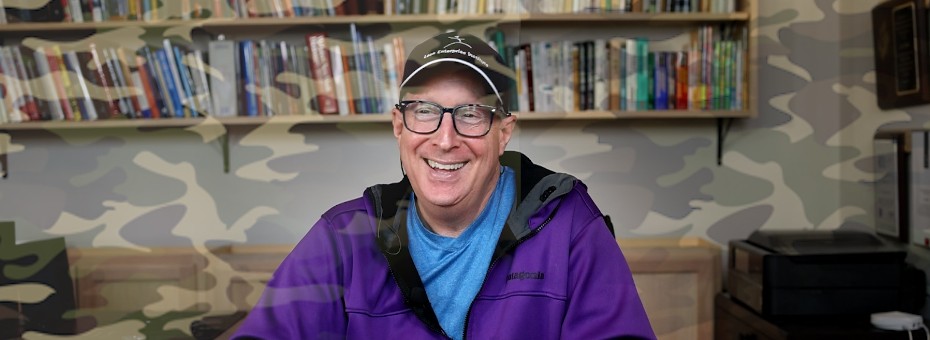In the fourth part of his problem-solving series, Art borrows from the many branches of the U.S military and their corresponding training methods, arguing that lean can learn a thing-or-two from the military. Find a transcript for the video below.
Part four of eight. Watch the others:
Part one, Coaching Problem-Solving
Part two, Lessons from NBA Coaches
Part three, Lessons from Martial Arts
Part five, Tuckman’s Model of Team Formation
Part six, Team-Building Tools and Practices
Part seven, Dreyfus Model and the Stages of Learning
Part eight, Toyota Coaching Practices
Hi everyone. This is Art Smalley, President of Art of Lean, Incorporated. Today, in conjunction with the Lean Enterprise Institute, I’m going to bring you another short video on the topic of coaching and problem-solving. In previous videos, I talked about a generic framework. We did a sports analogy from the world of basketball. I brought in some martial arts terms and analogies that I like to use. This time, I want to do one last external example because I think it is useful to look at the external world sometimes and this time, I’m going to do the military. There are military science and leadership courses. They have developed books, textbooks, and structured ways of thinking about things that I think are very analogous to our world and I want to share a couple of those frameworks.
Learn From What You Know
Full apologies up front: I can’t adequately represent the Army, Navy, Air Force, and Marines. I’m just going to cherry-pick a few things from the army courses and people I’ve talked with. In no way, shape, or form am I an expert on this topic. I’m hoping that we get some people with experiences in the field who would be willing to talk more completely about this topic in the future and share with us what coaching lessons we can probably learn from the military. So, if the topic interests you then stick around, I think you’ll enjoy it.
At first glance, you might think, “what the heck did the military and my world have to do in common?”. It depends! There’s probably some degree of overlap. The military is very much a human-resources intensive organization. They have a lot of supply chain and logistics work, and they have specialists and a variety of roles in between. So, one thing I noticed when I looked at the military science and leadership courses from the army side is that they have a very structured thought process for development. It reminded me of when I was hired and started working for Toyota in the latter part of the 1980’s in Japan, we had a specific thought process and career development plan for people, from the time you entered and went through orientation until you went through a progress of steps in courses and promotions, and potentially became a manager.
It was well thought-out. It’s completely different. I’m sure this framework is outdated because it’s a much more global and diverse company than when I worked there. But some things are probably still the same. We still think about the role of a team member, the role of a leader, the role of a group leader, the role of a manager, etc. The military is very similar when you study their courses and thought process on developing people. Of course, you have people that enlist and are just there for a couple years, but you also have people that are there for their career. You must have a career thought process for how to develop people on the enlisted side and the officer’s side. That’s where some of these military science and leadership courses that I previously offered come in and there’s many of them. I’ve got a smattering of them listed on listed here on this slide, but they’re just selected ones that I found on the internet. There are many more than this. A lot of the contents you’re going to see are quite slim.
Leaders Follow Frameworks
Most of the things that we face as leaders, coaches, and problem solvers in our everyday life. Now in particular, the military does have various problem solving processes and models. This was one I just picked off the internet for a combat team leader. There are different flavors and diversions of it, depending upon which squad or type of group unit you’re serving in and what level you’re at, but this is a generic one. It’s a seven-step model and it’s not too different from the five, six, seven, eight-step models we have in lean starts off with recognition and definition of the problems that sound familiar. In addition though, I don’t really want to talk about the army problem-solving steps. That’s not the framework that I was most interested in.
What I found interesting is something called MDMP, which stands for military decision-making process. They have handbooks developed just around this topic, eight-step models. Each step has many sub-steps. So, it’s more like 64 steps, but it’s eight-steps under step-one, etc. It’s a very thoughtful process for how you go about decision-making and all the things you have to analyze and consider. At the end of looking at it, I wish we had a lean decision-making model. The process for coaching and managing many of our situations, there are analogies. They start off by receiving a mission while we receive assignments, or we can interpret our work, our purpose, and our goals as missions, if you want. They’re not necessarily involving combat obviously, but neither are all of the military missions either.
They have to analyze missions and develop courses of actions. That’s what COA stands for. Complete analysis, compare them, get approval, and then issue orders and instructions to begin, begin processes to go forward. It’s not too different from what we often face as managers, coaches, and leaders. Also, interestingly, in their MSL, military science and leadership courses, I found something called TLP in their world that stands for troop leadership procedures. But I generically rephrase that as team leadership procedures for us and again, I wish we had something like this in the lean world for coaching. At the end of the day, the military is about leading people to assign a task goal or mission like we do many of the times, and they have to follow various steps and processes.
Coaching Borrows From Everything
Part of that involves making tentative plans, issuing instructions like we do. They conduct reconnaissance. Well, we go and see, get the facts, grasp the situation, it’s amazingly similar at that level. They must complete their plans after getting input from others, issue the order’s instructions, and then supervise and assess and adjust how things are going. They also have interesting eight-step training models, and their training models are not just about training. It’s more about planning for training, developing the training, the trainers, then doing reconnaissance. So, the site, the gemba, and then issuing initial orders for getting started, practicing and rehearsing, the training, executing the training, evaluating the training and how well it went and then retraining and improving every aspect of it. Then, continue to improve the trainers, improve the materials, improve the course delivery, improve the results you get in the field from the training. I think our coaching world needs a lot of this.
To be honest with you, it’s not just asking simple as asking questions or telling people to follow steps. There are a lot more aspects that goes into the military eight-step model for training and thinking. Take it as you will. Your mileage may vary, especially those of you who’ve served in the military. You’ll know the pros and the cons far better than I will. But I think in the lean world, we have to look outside of the topic of coaching and even problem-solving. Sometimes we don’t have all the answers and I think we’re kind of pigeonholed into a corner I’d like to get us out of. In a lot of ways, in sports, martial arts, military, and other areas, there are some applicable things that we should be looking at.
Aligning the Cross Sections
The military, for example, has a 200-year history of thinking and exploring leadership, decision-making, critical thinking, problem-solving, and a variety of things. Some of their course books I find very interesting and it would not be hard to adapt to our world to be in all honesty. They have very thoughtful career development of personnel by level and type of assignment, which I think lean needs as well instead of this one size fits all. They’ve been very thoughtful, and they have to because of their size, scale, and standardization of courses. So, if you’re something big, like a Toyota or a GE, the military does have a lot of analogies because of the scale and size of training that has to occur. The military thinks at the smallest unity with a two-person firing squad, but you go up to a six-to-ten-person squad, a platoon that might have, you know, thirty-two people get up to a company with a hundred people and they have to go all the way up at the highest level.
To a field army, you’re talking tens of thousands of people, it gets very large. They have to scale this in many cases. But because of that requirement, they’re very thoughtful about training, leadership, and thought processes by level because of necessity. I think there are interesting models of thought out there, yet they don’t 100% align with the lane. Obviously, there are some cross sections and things that do align well and others that don’t, but that’s something we could look at. I helped somebody explore this topic because I find the areas of the military decision-making models, troop leadership procedures, their training thoughts, and problem-solving routines quite interesting and more analogous to our world than I thought.
So, I hope someone is inspired by this to investigate the materials or those of you that serve in the military. Maybe you can step forward and help explore some of this in a lean sense. I hope you enjoy this today. In the next video, we’ll go back to regular models and things a little bit closer to home but have a safe day and I’ll see you in the next video.
Managing to Learn with the A3 Process
Learn how to solve problems and develop problem solvers.






